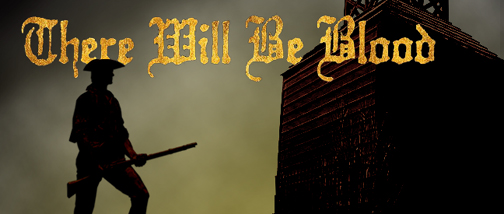| The Breed's Hill Gazette April 2009 | |
 |
|
|
By Dan Shippey & Michael Burns
The stillness before dawn was shattered by the peal of alarm bells and the sound of drums waking the countryside to the coming danger. Somewhere between 50 and 70 militiamen drew up into their formations in the middle of town on Lexington Green. Some of the militia were boys, some old men; some stood within view of their homes and families. Soon, the early light of dawn revealed a column of British regulars marching out of the fog--first dozens, then hundreds. Within moments, the guns would begin to fire, men would die, and the world would be forever changed. Why did it have to come to this? What made this moment on April 19th 1775 inevitable?
15 years and counting down In 1760, Customs officials in
11 Years and counting By 1764, the British colonies in By March 1764, The British government was still in need of revenue, and now they needed to control those voices of dissent in the colonies as well. The colonies appealed to George Grenville that they were loyal and willing to raise revenue through a proper constitutional form in their own legislatures. Their appeals were ignored, and Parliament imposed the Stamp Act. A targeted tax, (social engineering if you will), the Stamp Act lay heavy taxes on all printed paper like that used for newspapers, legal work, and licenses. When word of the new tax reached the colonies, individual legislatures voted on resolves to make their protest known, and called for a united response that become known as the Stamp Act Congress. The working class people responded differently. Forming into groups with names like The Sons of Liberty, they burned effigies of the appointed Stamp Masters, and sometimes attacked their homes. As trade began to slow, Parliament voted to revoke the tax. As word reached the colonies, the church bells rang in victory. The victory would be short lived.
10 Years and counting
Lieutenant General Gage was finding it hard to convince
citizens in
9 Years and counting
1500
British soldiers arrived in
8 Years and counting After the failure of the Sugar act and the Stamp Act, Parliament became determined to prove it had the power to tax the colonies. In 1767 it introduced the Townshend Acts. These acts were meant to raise money to pay for appointed Royal Governors and Judges that would act to enforce the King and Parliament’s directions and to more effectively impose
compliance with trade regulations. Included in the act were new
taxes on paper, lead, paint,
|
Quartering Act. Angry protests against these new violations
of the colonists’ rights rose up across the colonies, but especially
in the largest American city,
7 Years and counting With
protests growing and citizens refusing the new taxes, in 1768 the
British government sent troops to occupy
5 Years and counting
The tense situation between soldiers and citizens in
2 Years and counting
By 1773, Parliament believed it had devised a way to tempt
Americans to give up their boycotts and protests and finally pay the
tea tax. Their plan would allow tea that would normally have to ship
through 1 Year and counting
After the destruction of the tea, Parliament and the King
decided that they had not been hard enough on the protestors. Their
new laws, called the Coercive Acts or (by Americans) the Intolerable
Acts, included The Boston Port Act, The Massachusetts Government
Act, The Administration Act and the 2nd Quartering Act.
These new actions closed the 7 Months, the fuse is lit. From
before the French and Indian War, men throughout the colonies had
formed militias and stocked gunpowder for their common defense. Now
they were forming and drilling for the defense of their liberty. In
September 1774, Boston Governor Hutchison decided that the militia’s
supplies of gunpowder were dangerous and decided to implement some
18th century gun control. He sent a force of 260 soldiers
out at night to remove the supply of gunpowder from
0 Hour
April
19, 1775. The order had been given by Military Governor Thomas Gage
to march 700 British Regulars
to
|